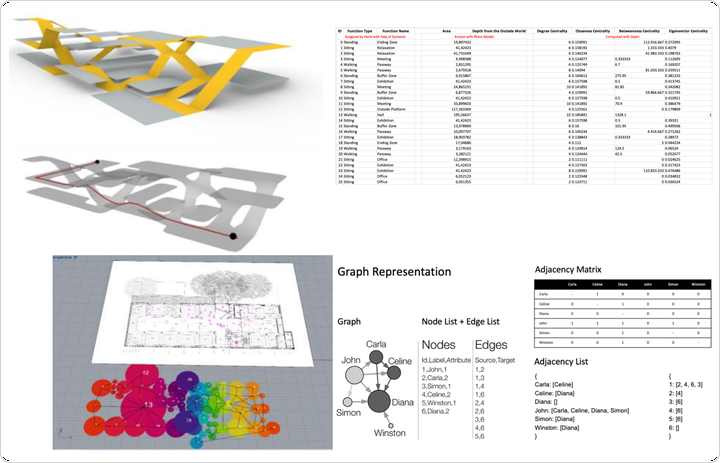Reuse; On Evaluating the Fitness of Spatial Configurations Before & After Retrofitting for Reuse of Architectural Heritage
Book Chapter, Mastermind CRASH; A method to reveal the impact of architectural redesign, regarding Conservation, Reuse, Architecture, Sustainability, and Heritage, Feb 2021

Authors: Pirouz Nourian, Nan Bai
Abstract:
Focusing on the quality of reuse of buildings with respect to the efficiency of human movement patterns and the effectiveness of allocation of functional spaces with respect to their needs for social encounter and avoidance reveals the configurative nature and the human impact of architectural design. By comparing such functionality assessments before and after a redesign process for retrofitting, a clearer grasp of the effect of the spatial configuration on the efficiency and the effectiveness of a design can be explicated. In configurational analysis the focal point of attention is the structure of the walkable space in the building, detached and abstracted from the shape of the building. In configurational functionality assessment, the focus is to synthesize multiple analyses, aggregate the results, and derive indicators of quality with respect to either quantitative objectives or qualitative ideals. Does the structure of the space and the allocation of functional spaces to various locations in the spatial network of a building have an effect on its overall functionality/utility? How can we study these effects? Are the functional spaces placed in their best-fitting locations? Do the design operations like adding an external staircase or tearing down an interior wall make a difference in the accessibility of functional spaces? By digging into this topic, you will gain a methodology with which you can describe and analyse a spatial configuration in a reproducible way.